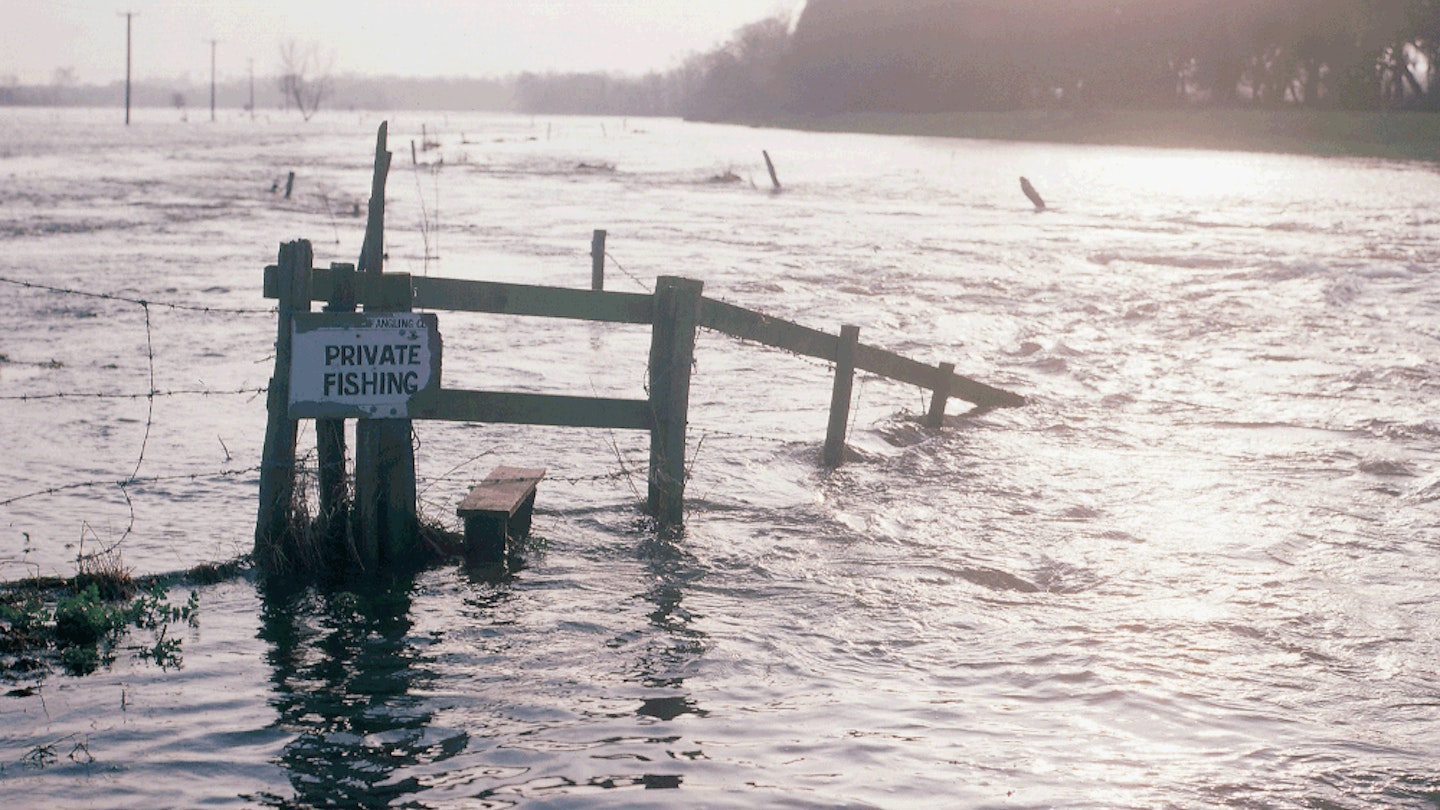Flooded rivers frequently provide an excellent chance of catching coarse fish, especially big barbel, roach and chub, yet relatively few anglers fish them successfully. It’s probably because they do not make any real attempt to maximize their chances during a flood.
A halfhearted stab at floodwater fishing is rewarded with few bites or fish and they simply give up.
You need to think carefully about where and when to go in such conditions, or you too will end up believing that the fish don’t feed, or at best feed only occasionally and haphazardly. This is where we can help out with our floodwater guide...
The 'right kind' of flood...
Though every flood is different, there are two main types – a winter/spring spate and a summer `flash’ which occurs after exceptionally heavy rainfall. In winter the fishing will be poor when the river is rising.
This is because the extra water is normallly cold and it carries sediment which may clog the gills of the fish. It certainly puts them off feeding!
Fishing is usually best in winter when water levels begin to fall. Fish must use more energy simply staying still against the flow. To replace this energy they must eat more, both during and after the flood. And hungry fish are easier to catch.
Summer floods always bring positive tidings too for the angler, as the extra water is not cold and it brings more food to the fish, so always be prepared for that August downpour.
Look for colour in the water...

Coloured water makes fish less wary of anglers because visibility is reduced. This lack of visibility also allows you to use larger hooks and heavier line than normal and it also means that big, smelly baits are key, as fish will be relying less on sight to feed.
New swims that are well worth trying...
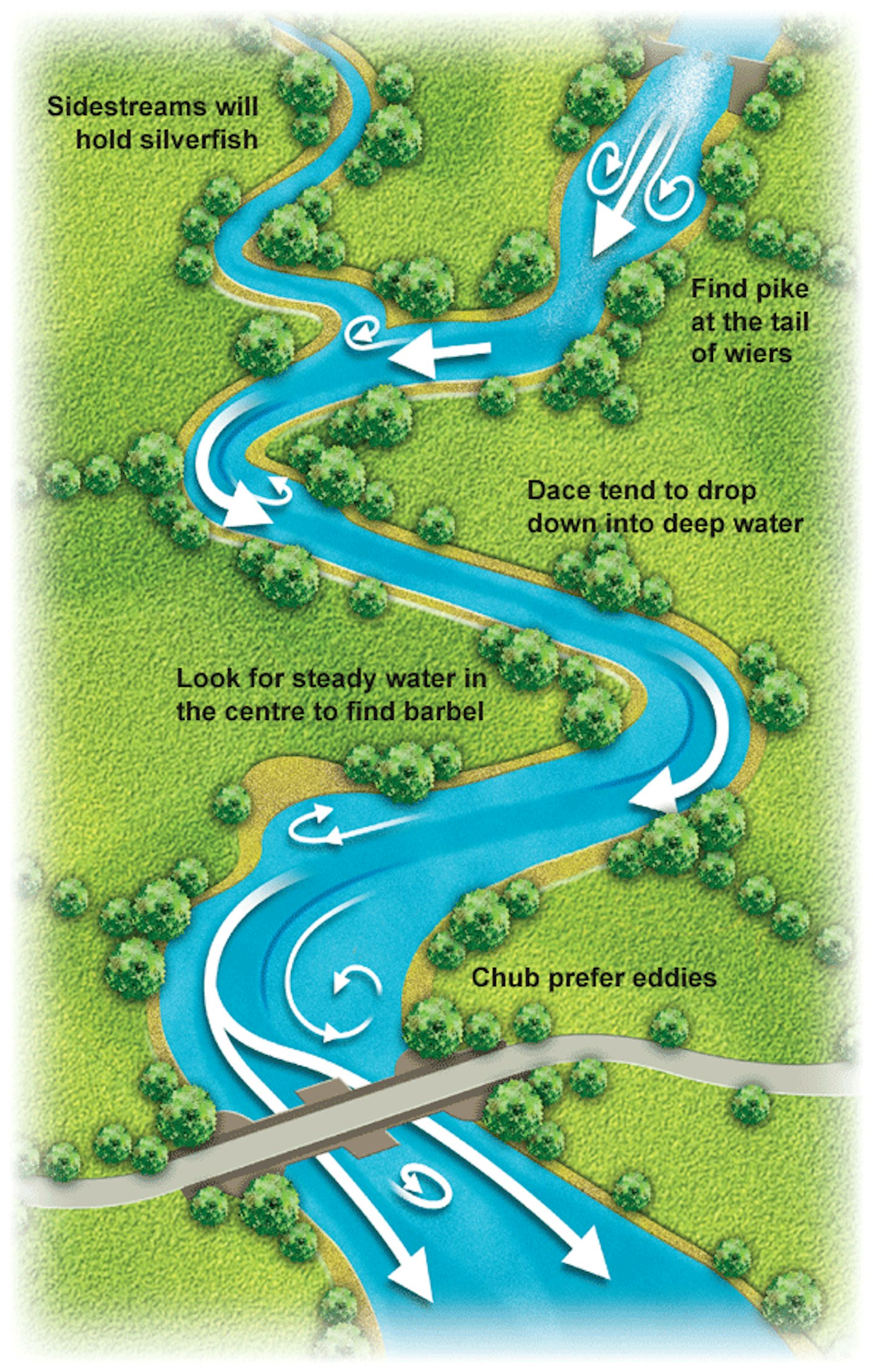
A falling river may be more productive, but it is still possible to catch fish on a river where the level remains high. Fish are not where you would normally expect to find them. Boily water in the centre is too fast for most species, so look for them in areas which offer protection from strong currents.
The slower water close into the bank is a good place to start, but if you want to fish the near bank, keep quiet or you’ll spook the fish. The inside of a bend is usually slower than the main current and is also worth a try. Where the bank sticks out into the current there is often an eddy on the downstream side which acts as a holding ground for big fish.
Slack water behind trees, bushes growing on what is usually the bank and areas just downstream of bridge supports, are also well worth investigating during floods.
Sidestreams can offer excellent sport...
Small feeder streams joining the main river can also be excellent. These small waterways – perhaps only a foot or so deep in normal conditions and usually holding few fish – can become real hotspots when floodwater raises the level to a few feet. When this happens, they offer a refuge from which they emerge to hunt for food.
Look out for ditches and rafts...
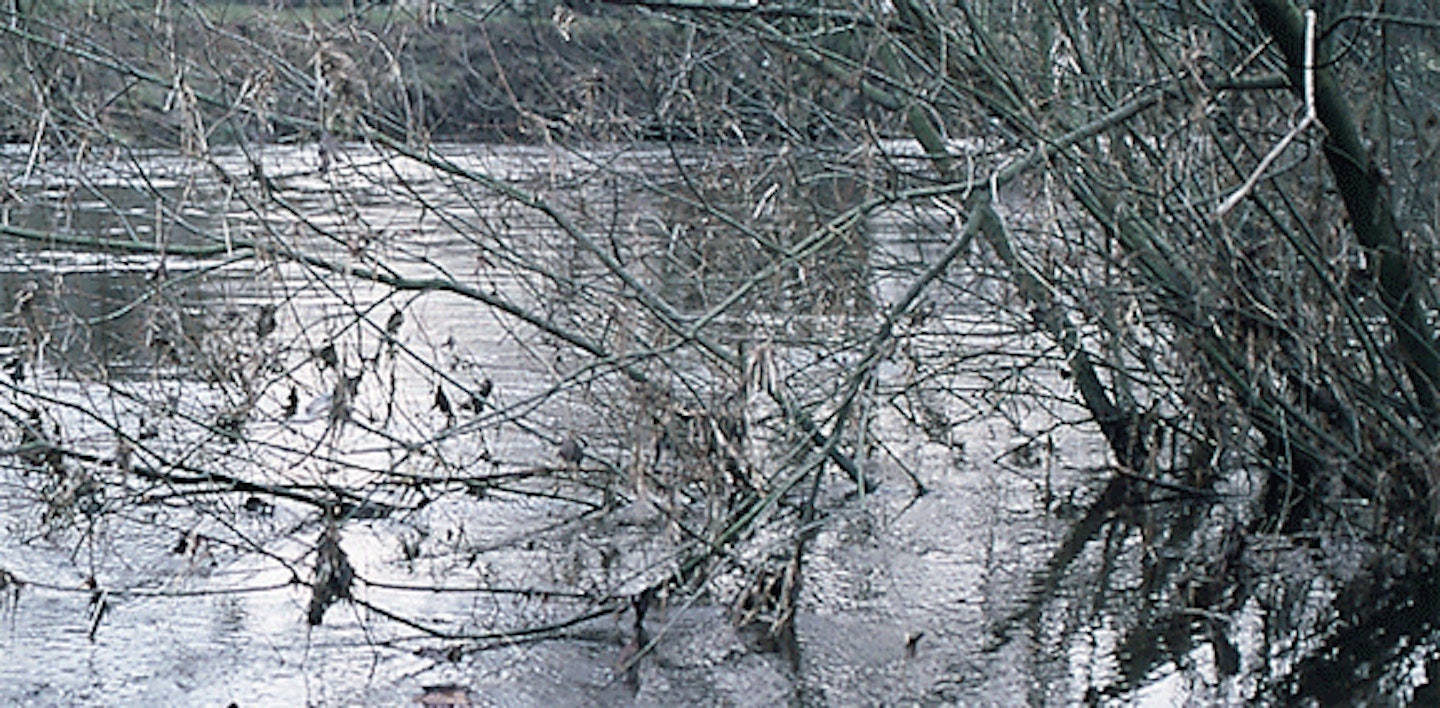
The best swims need not be completely slack. Those with a gentle flow of water compared to the main current are also good potential holding areas for fish. A
bankside ditch that is usually dry can become a little stillwater haven for fish exhausted by the flood current. Another area of shelter, especially for chub, are rafts of debris caught by any overhanging branches.
Dropping a juicy slug or big bunch of lobworms under one of these can tempt a greedy lump.
Be safe at all times...
You need to take extra care when at the side of a flooded river. Banks are treacherous and can crumble after being undercut by a powerful current.
It always makes sense to go fishing with a friend and we also urge you to take great care if you are wading across waterlogged fields and ditches. Rivers are dangerous places!
Top tips for tackling a flooded river...
Use a bait dropper for feeding
Bait droppers can be used in a slowly fining-down river for getting a good carpet of feed down to the bottom. Be careful when using them in a slack as you may possibly spook fish already in the swim.
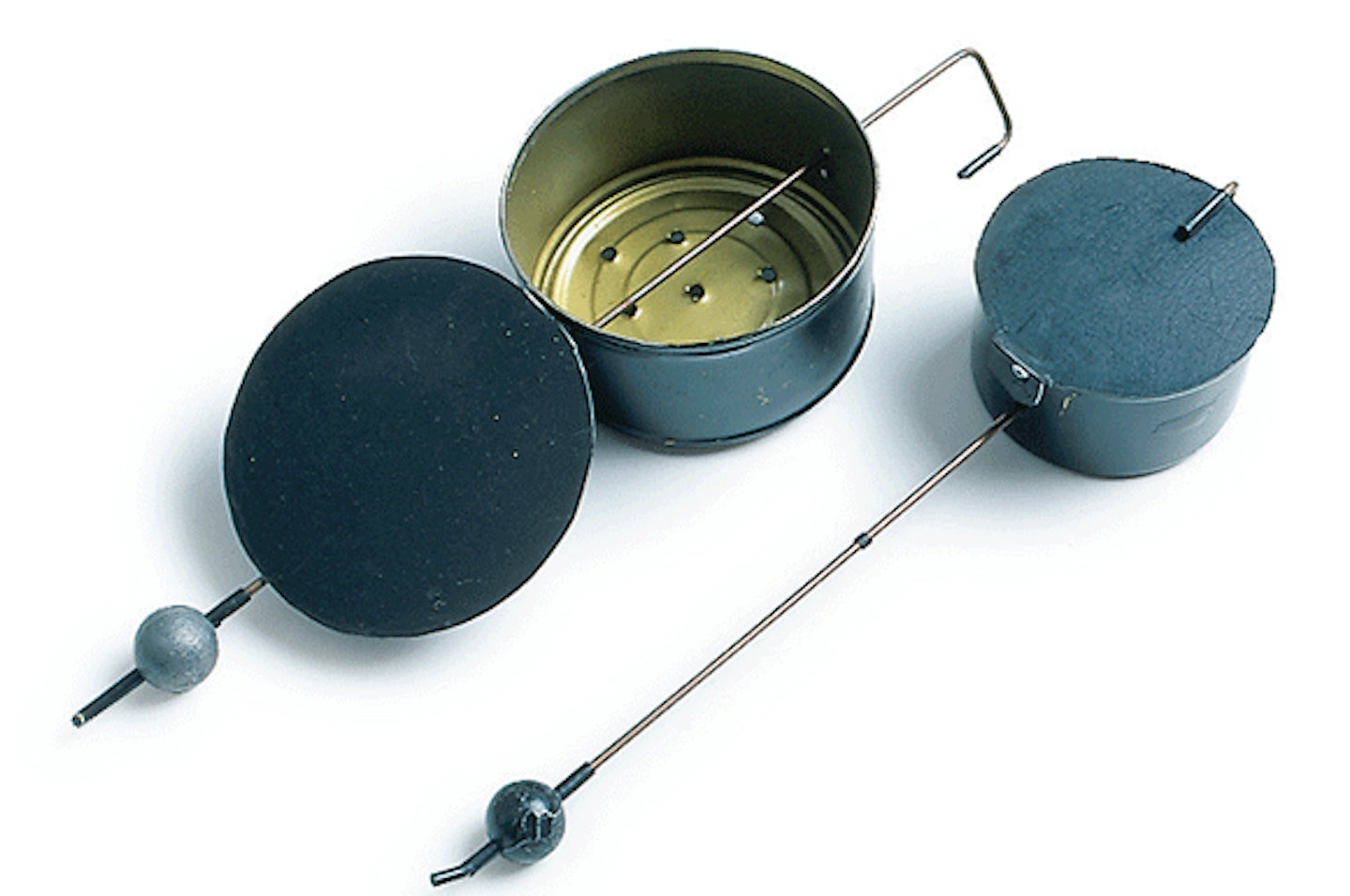
Take away tasters
Tikka and Tandoori pastes are a super additive to meat baits. They’re strong flavoured pastes that seep into your meat staining it a fantastic blood red colour. It’s best to fry the meat to seal in the flavour.
Hook strength and power
Powerful, muscular hooks are a necessity to get those fish out of the flood. Hooks to try are ESP’s established Big-T Raptor, and Drennan’s Continentals and Super Specialists. Don’t be afraid to choose a size 2 hook if you are selecting a bigger bait.
Try hot and spicey flavours
Chilli or Tikka powder is another super flavour for floodwater adventures. Barbel find it irresistible. Just like kids following a Bisto trail, scent from this will drift downstream, enticing fish to your bait. The flavour can be added to the meat by frying, or simply freezing it.
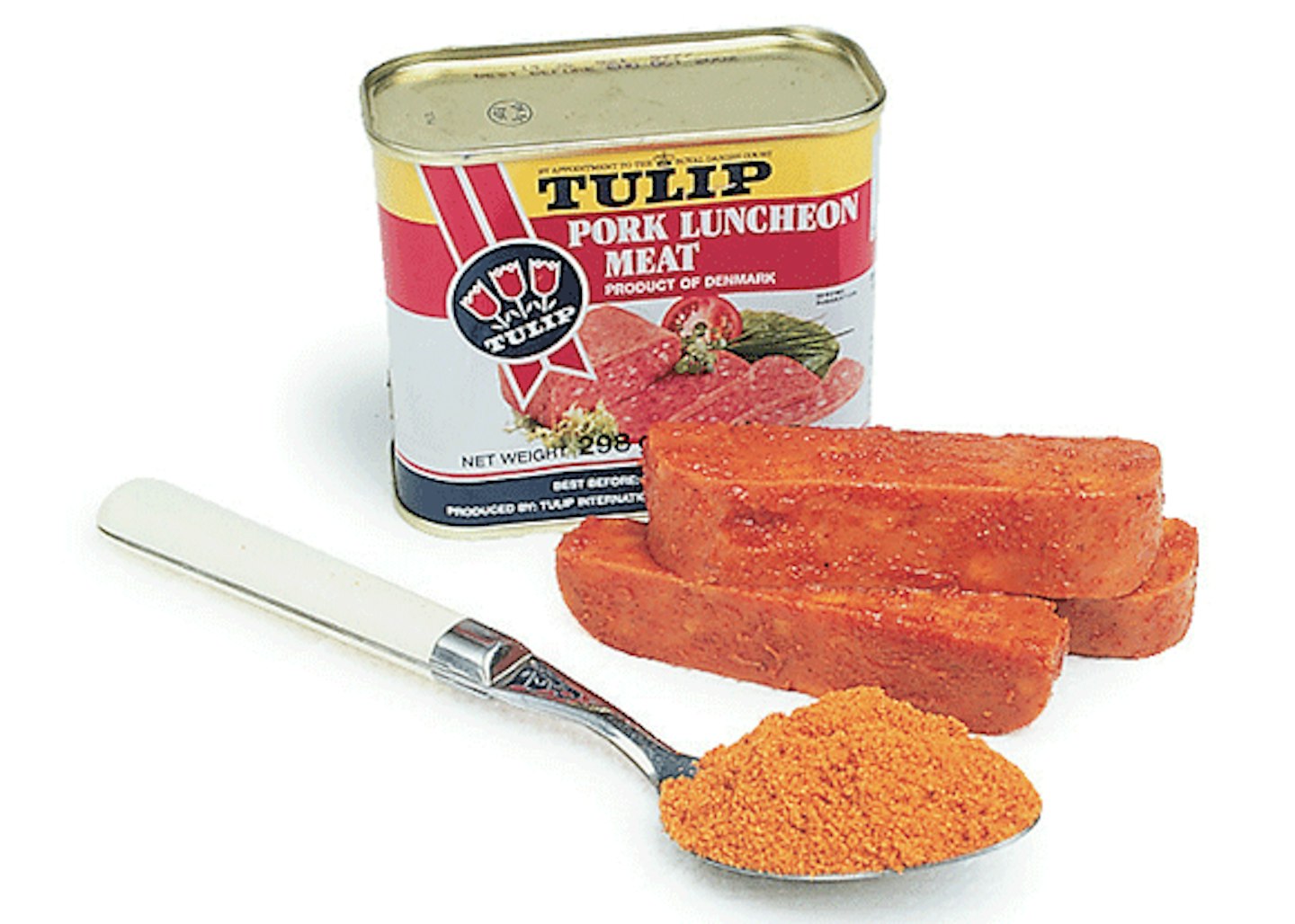
Use the right lead for the job
Pear-shaped leads have a tendency to roll along the bottom, so why not choose a flattened lead or a knobbled lead, such as the popular Grippa leads. This will ensure your bait has a better chance of gripping the bottom in the flow. Hardened Floodmasters will use leads up to 6oz in weight to hold position.
The right rod for flooded rivers
Fishing in a flood calls for a meaty rod. Canal winklepickers are just not up to the job! Whatever you choose, make sure it’s capable of coping with playing and landing a big fish. Opt for an Avon style rodf having a test curve of either 1.75lb or even 2lb as this extra strength will help control both the rig and the fish against the powerful current.
Check the river temperature
The temperature of the water is important. Many specialist anglers will happily fish right down to 42 degrees Farenheit (5.5 degrees C) provided the river temperature is rising. Anglers such as Bob Roberts have had loads of barbel at water temps below 50 degrees farenheit. Most rivers fall below this in November and stay there until February. With anything under that you should go home and surf through more pages of Gofishing.co.uk!

Which mainline to use...
Sufix Synergy and Daiwa’s Sensor are two highly abrasion resistant lines that are good in high water conditions. You can fish in confi dence knowing you are not going to lose that once-in-a-lifetime fish. And don’t go below 10lb; weaker lines are not suited to this style of fi shing.
Garlic attracts them for miles
Garlic sausage is an ace floodwater bait, because of its heavy scent. It can be further boosted with the addition of garlic oil. Don’t be afraid to use a big chunk on a size 2.
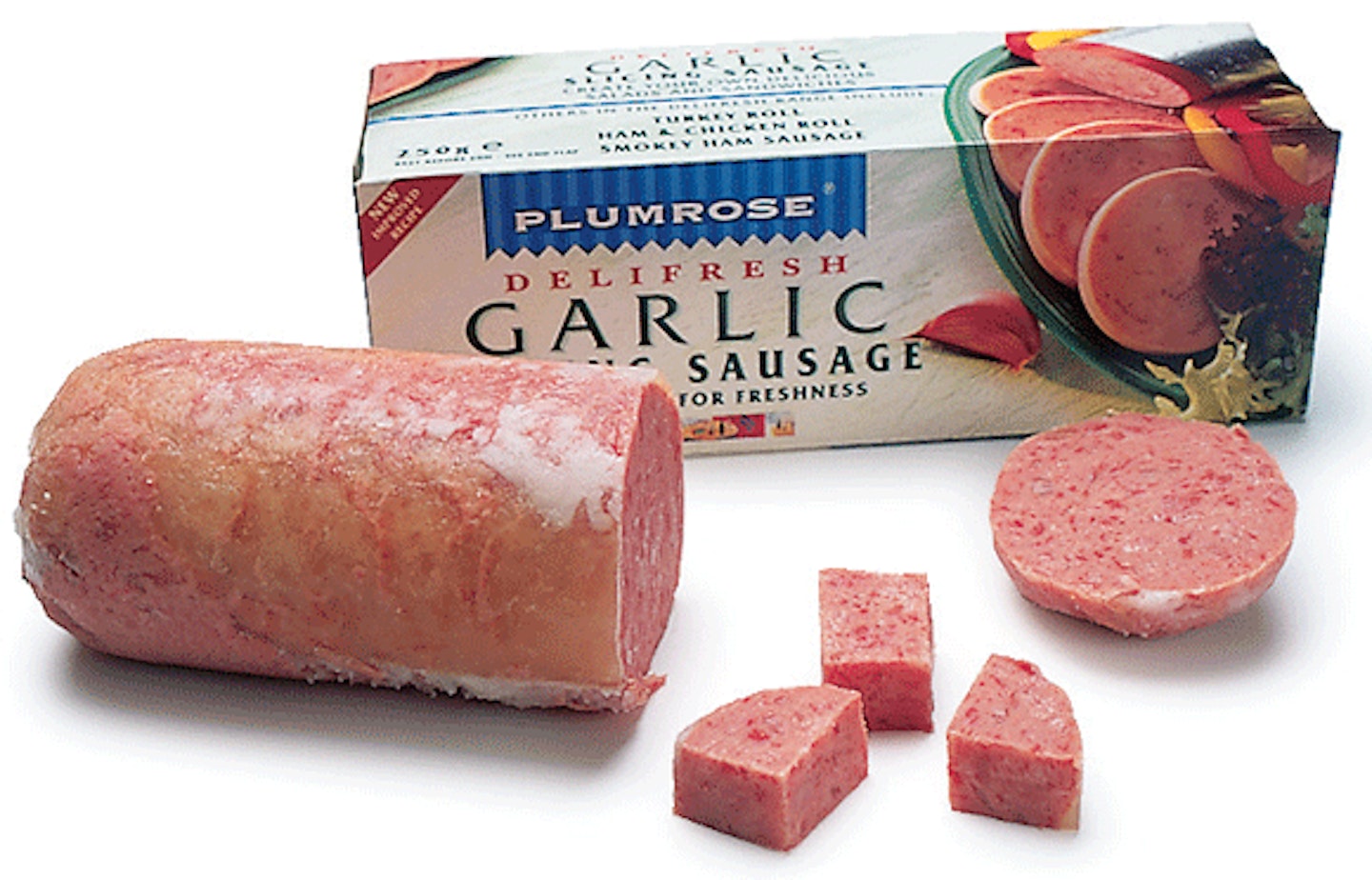
Paste will gain extra fish
Hi-tech pastes have been immensely successful in recent years as it can be coloured and specifically flavoured to your exact requirements. Good base mixes
to try include John Baker’s Frost and Flood and Dynamite Bait’s The Source. Check out the Mistral Anchovy and Halibut pastes, too.
Always take some lobworms
Lobworms have been catching fish since the days when Izaak Walton fished the rising river Sow. During a heavy flood, thousands upon thousands of them will be washed in to the river, providing a super free meal for fish. They’re ideally presented with three or four individuals together. Chop off the tails (not with a carving knife!) to release the juices. Don’t be in a hurry to hit bites on lobworms. You’ll get lots of sharp tugs and pulls that you’ll never hit. Sit on your hands and wait for that un-missable pull.
Watch the weather for success
There is no better time to fish for barbel in winter than when a river is in flood. Winter rain frequently arrives on Westerly or South Westerly winds that blow away the frosts, lift the water temperature and send the barbel on a feeding spree. However, melting snow water is the kiss of death, so be warned and watch the weather.
Look for smooth water
Don’t be fooled into thinking that barbel will be sheltering from the flow in that tasty looking slack or eddy. On the contrary, you will find barbel in the heaviest water. The problem is presernting your bait there. Seek out water that is smooth, with no boils on the surface, that flows over gravel and moves through at something like walking pace.
Avoid drifting debris
Floodwater means lots of debris is washed along with the flow and this can easily build up and smother your hookbait. The secret is to cast upstream and fish for drop-back bites. I don’t hesitate to cast 10 or even 20 yards upstream. Any rubbish hitting your line will then slide away from the hook rather than towards it.
Don't strike at every indication
Ignore taps and plucks – bites are generally very positive when they occur.
